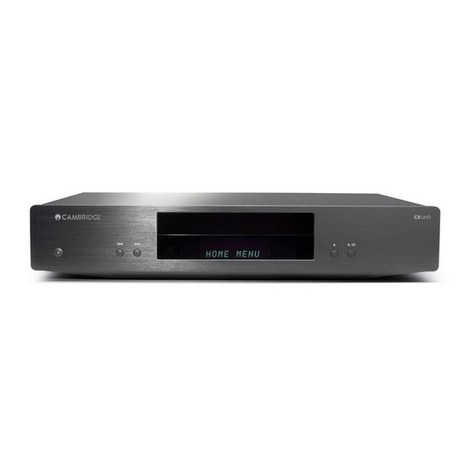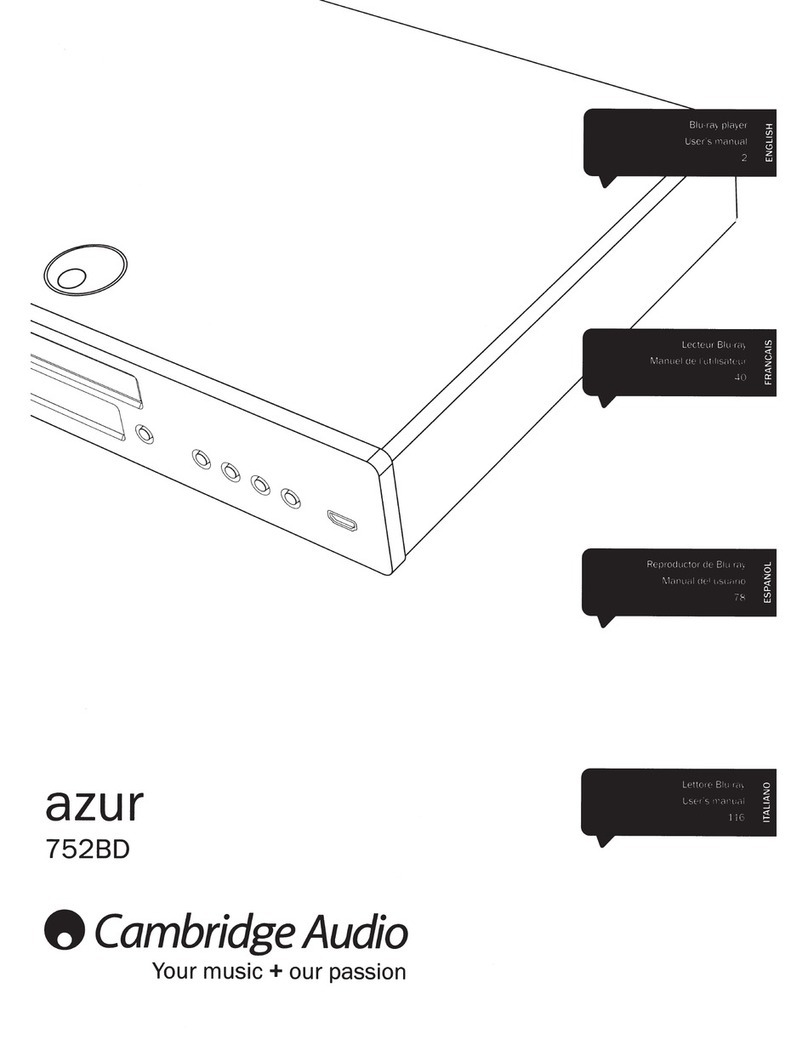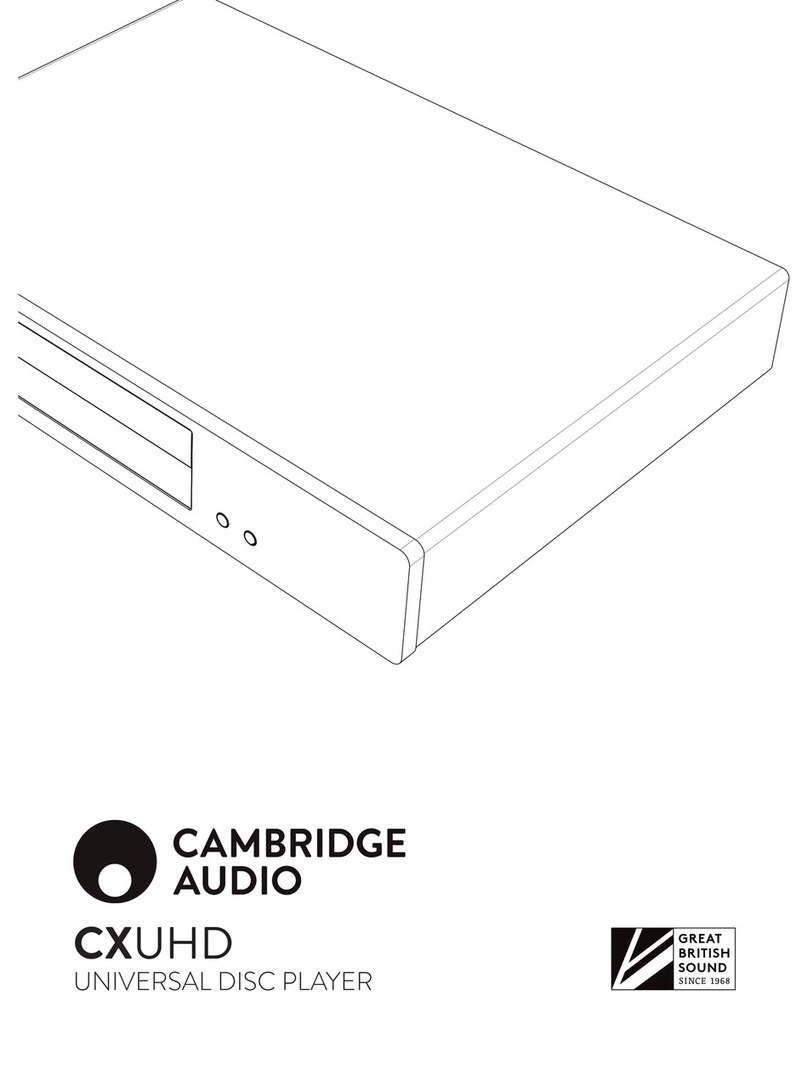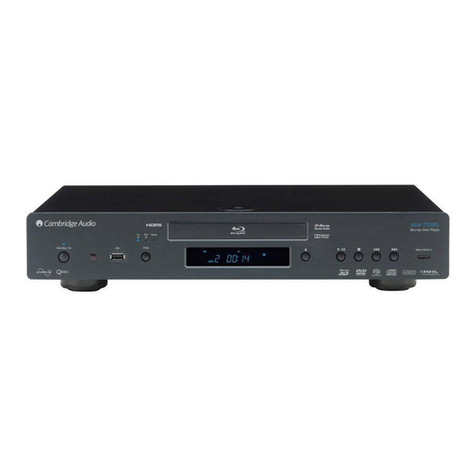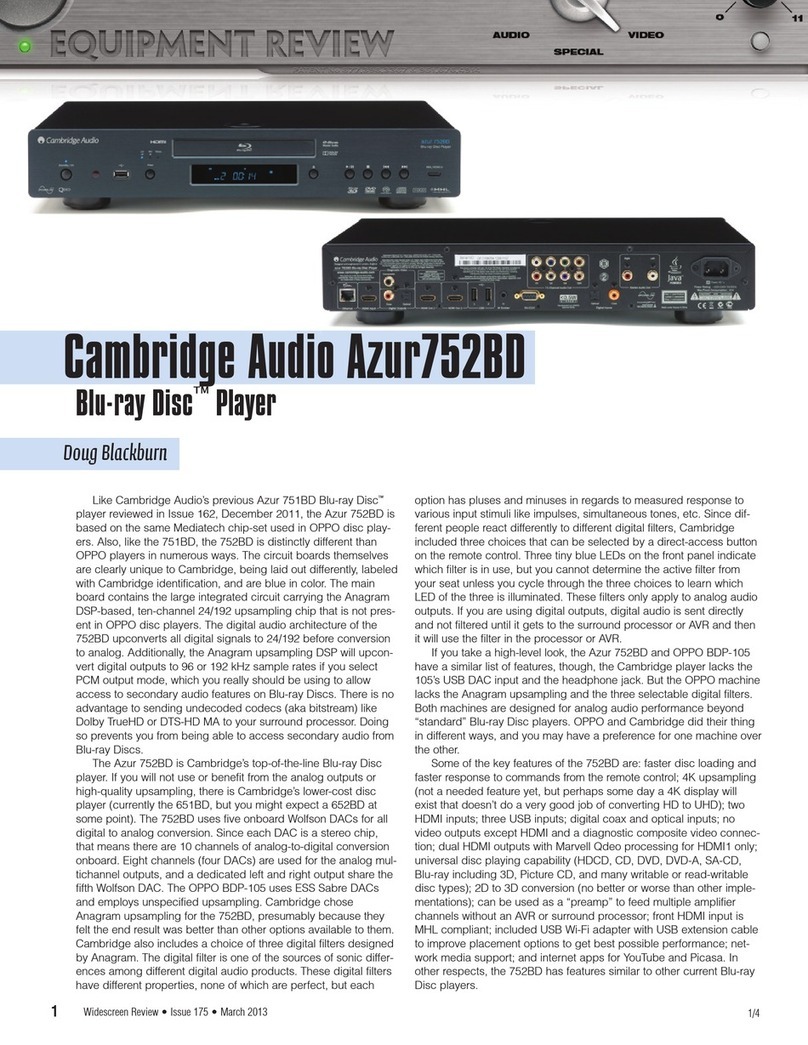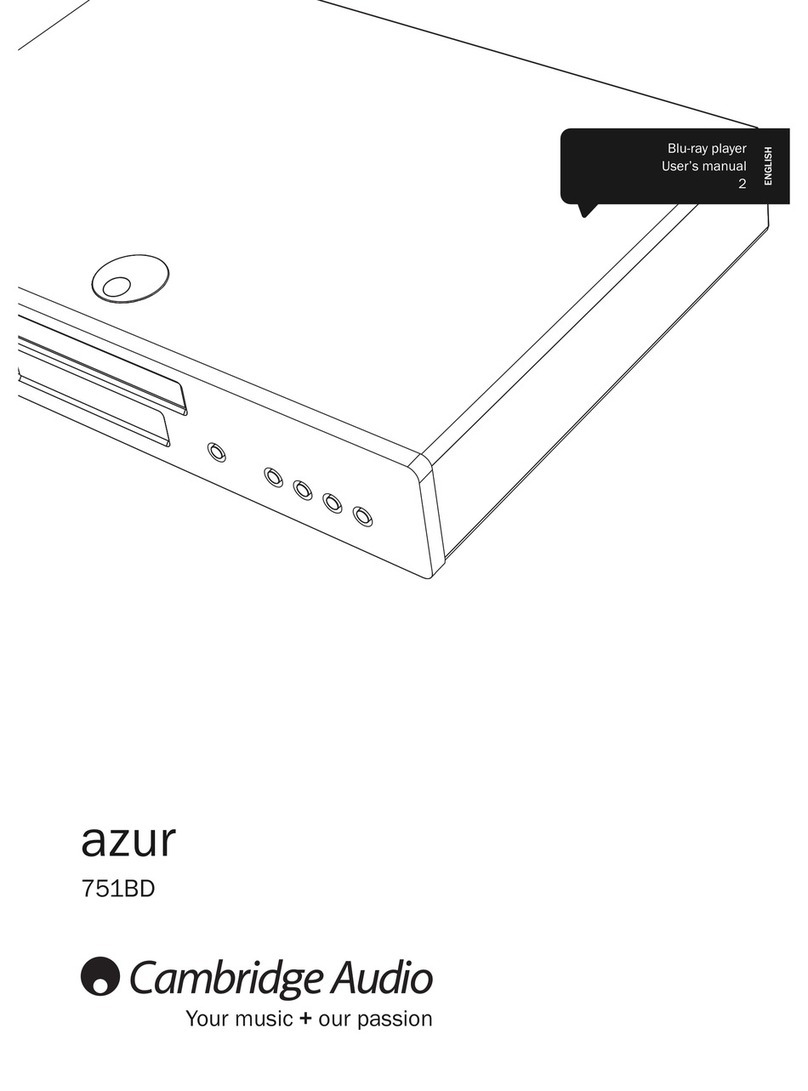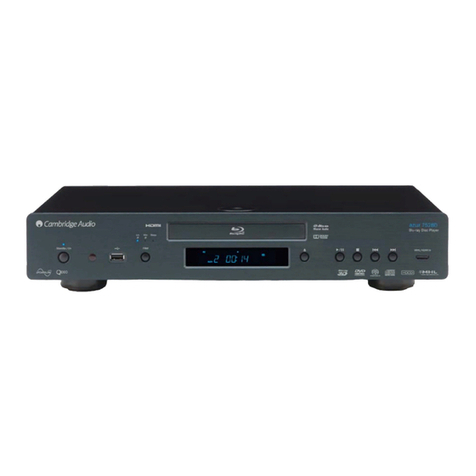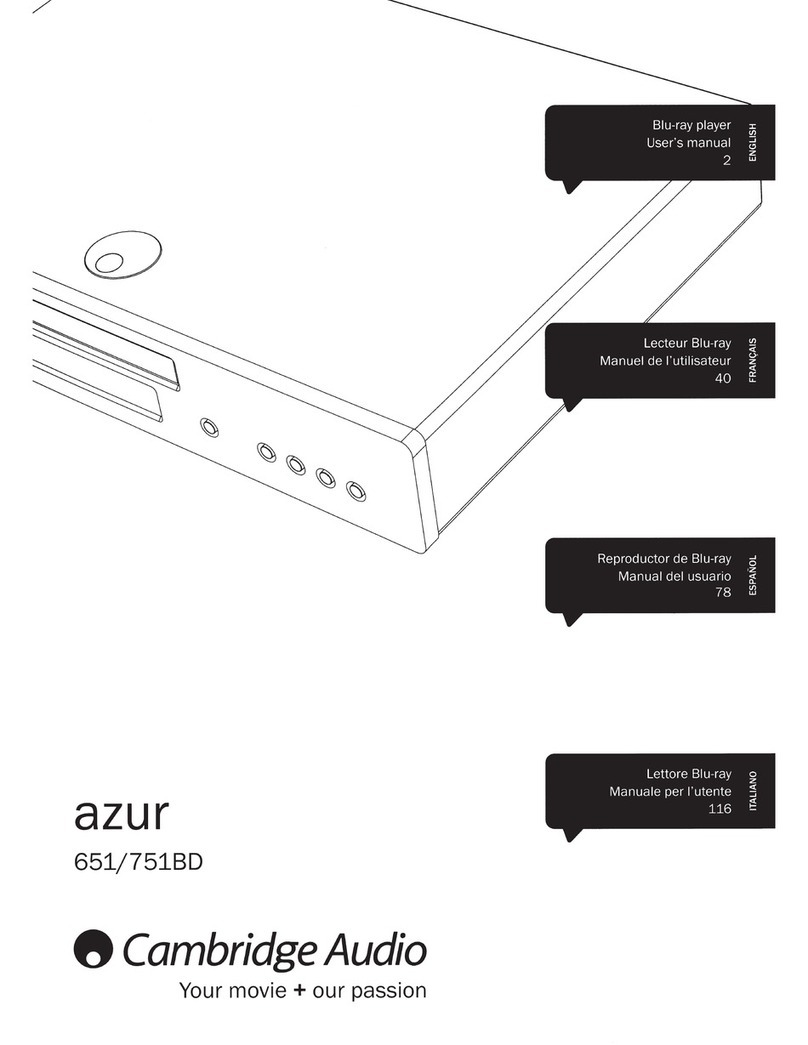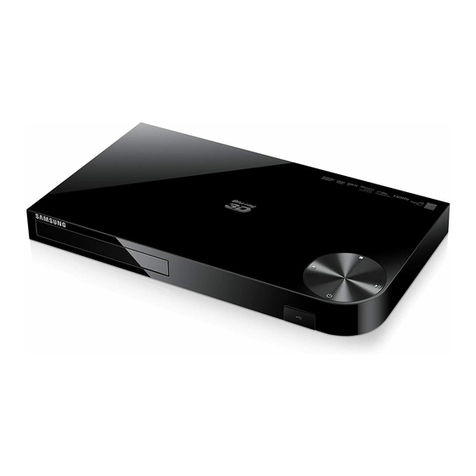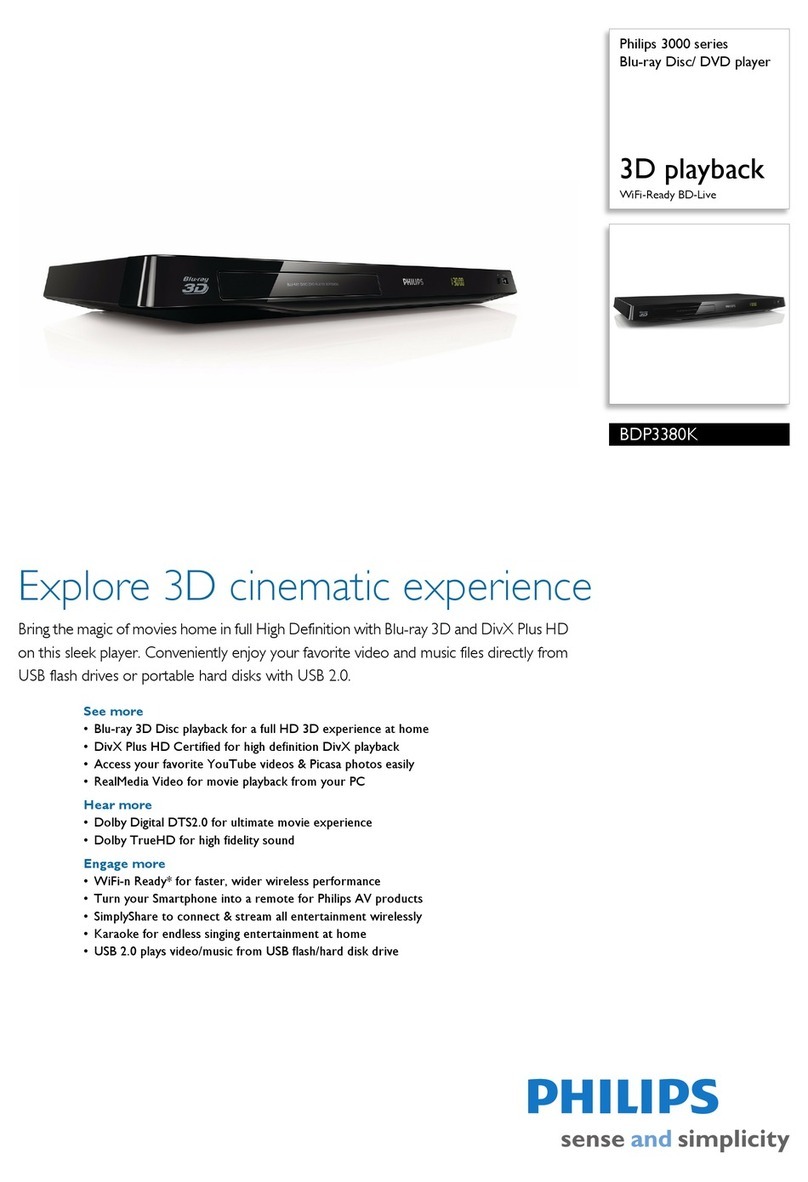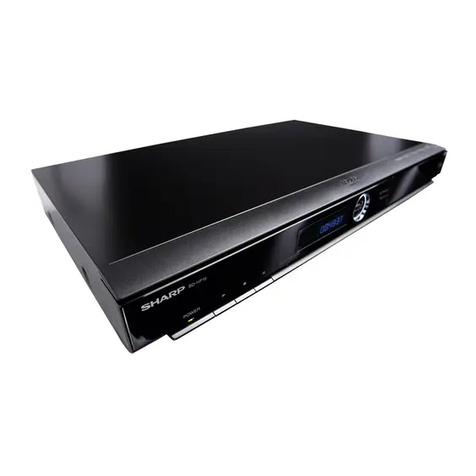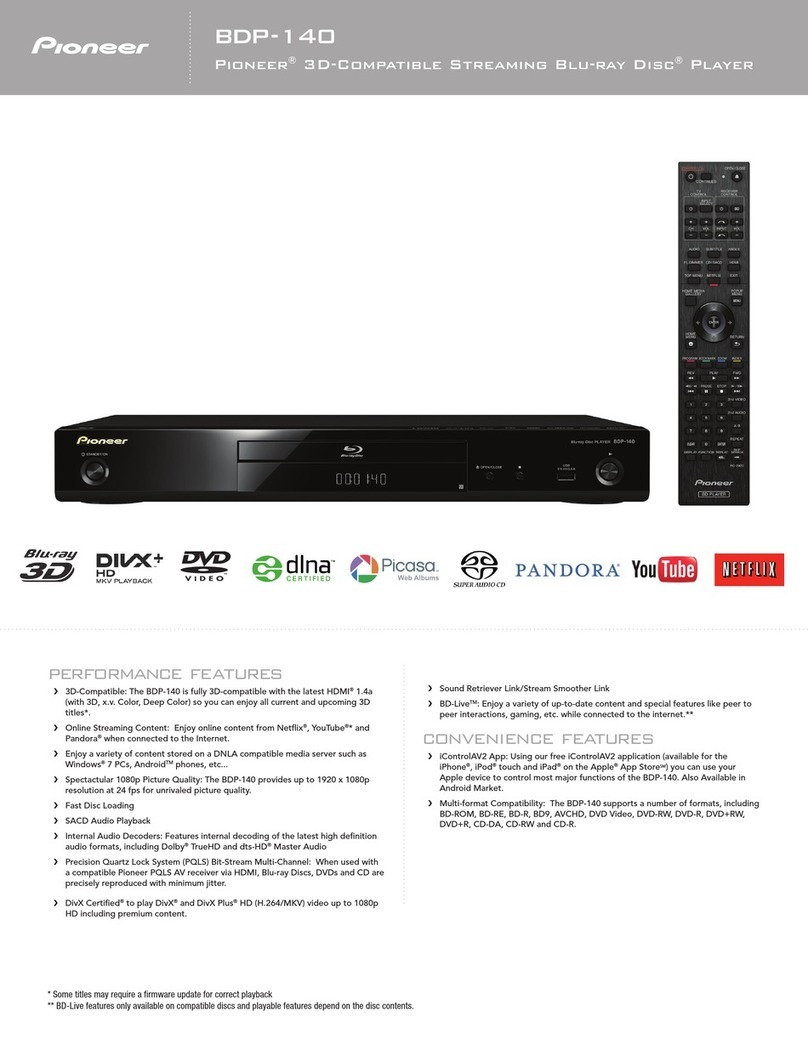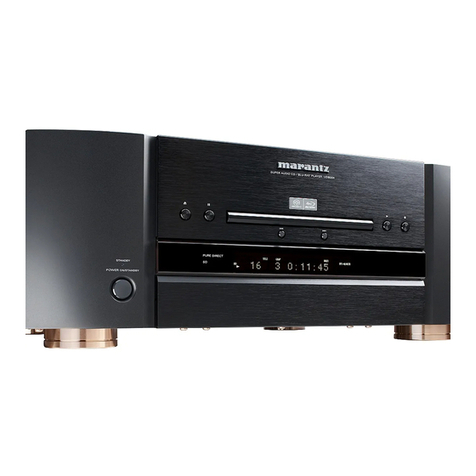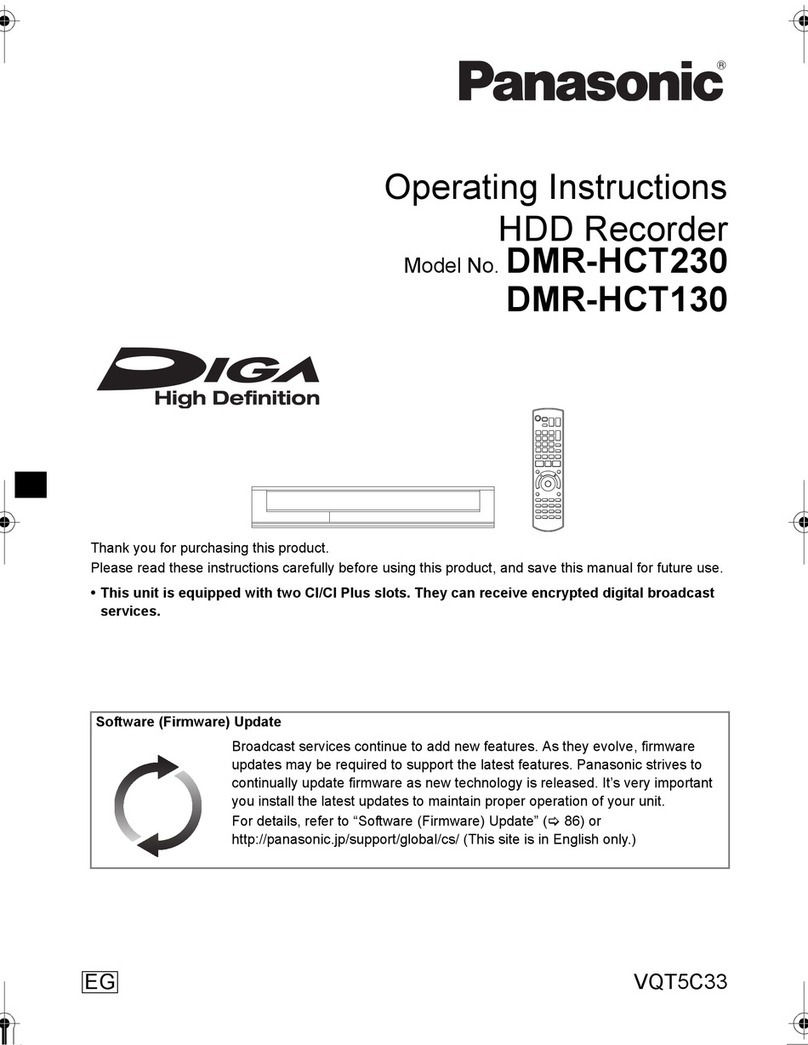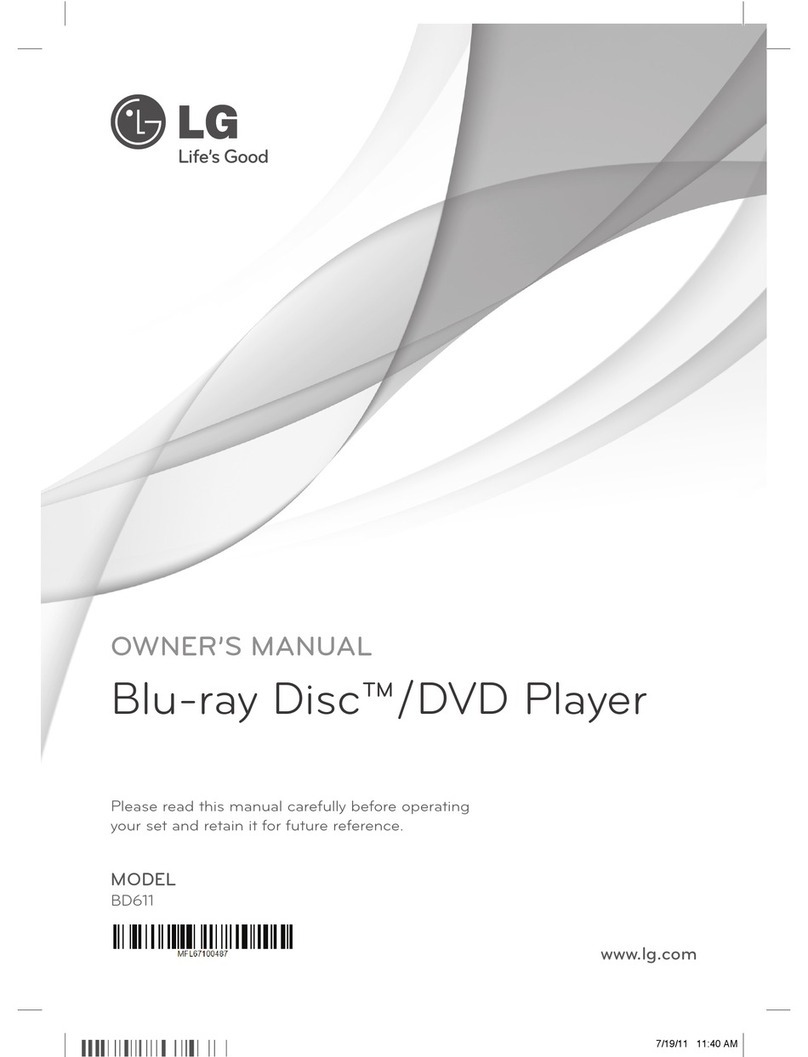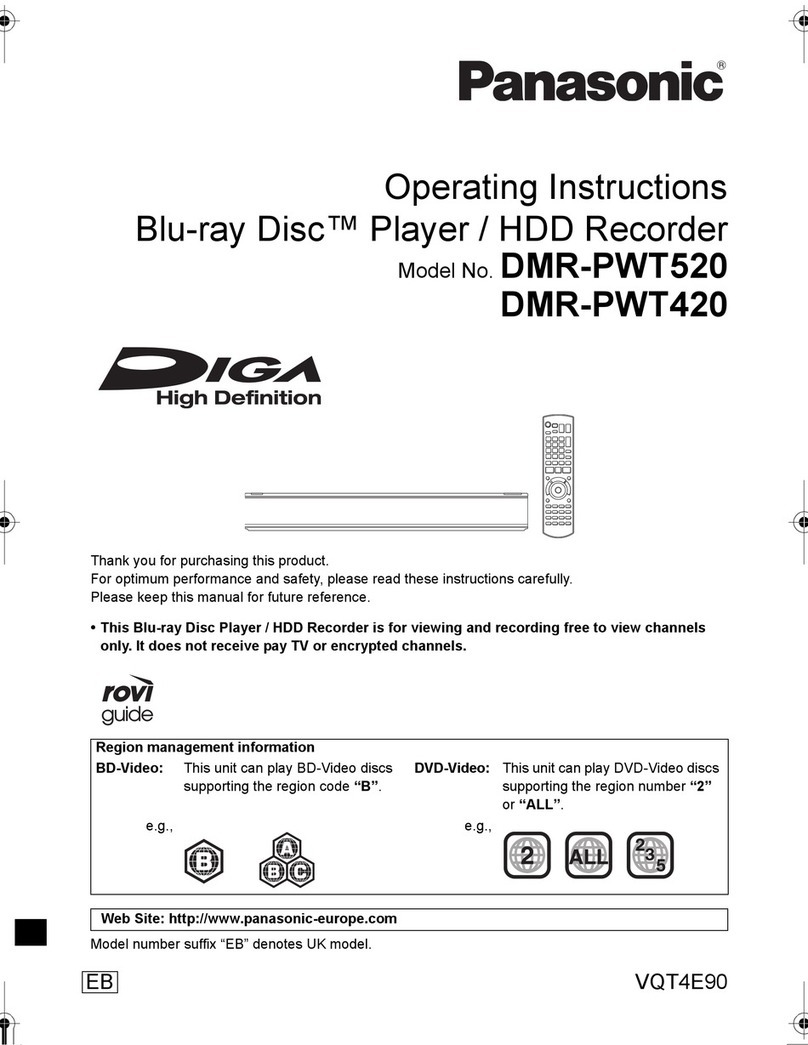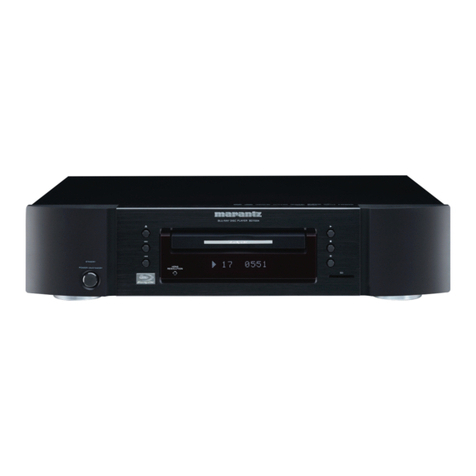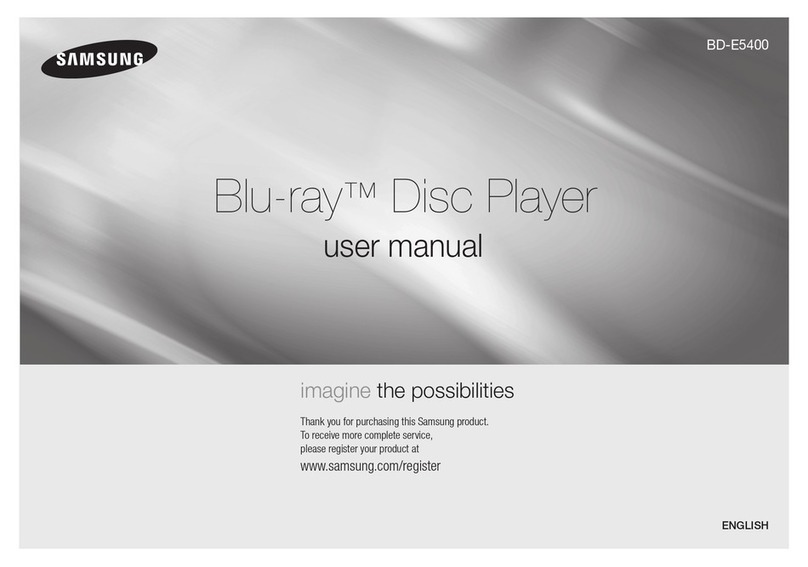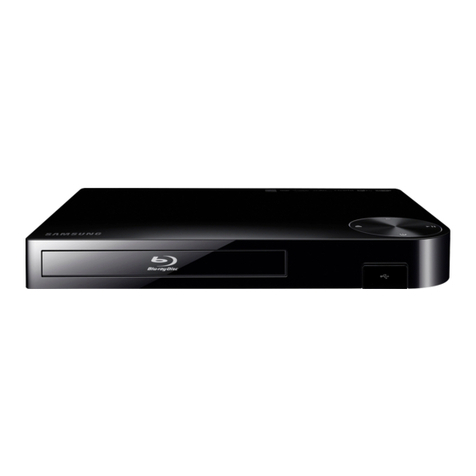www.hi-fiworld.co.uk JUNE 2010 HI-FI WORLD 37
REVIEW
tests, but most quality Blu-ray
players manage this nowadays.
There were no jaggies at all, no
motion trailing or feathering,
nor strobing. Our more
rigorous Burosch DVD video
tests were also handled without
difficulty. With live video shot on a
tripod mounted Canon HV30 that I
find more revealing of picture quality,
reproduction of grass and trees
matched that of a Samsung BD-P1600
but did not improve on it, unlike
a Philips BD7500 that was clearly
better, making the 650BD very good
but not exceptional, and this was my
general impression with commercial
films too. The player had no trouble
reproducing the smooth blur of an
idling Tiger Moth propeller, where
some players break up, so its motion
handling is good. Not only are all
video resolutions catered for, but
there is even a video bypass mode,
called Source Direct.
Cambridge fit a raft of legacy
video outputs for compatibility with
TVs, including Composite, S-Video
and Component but ideally, HDMI
should be used. There is no Scart.
Also on the rear panel and front
panel are USB sockets for mass
storage devices. Cambridge say each
will supply up to 0.5A to external
drives and those needing more will
have to be self powered. Formatting
must be in FAT32, which both PCs
and MACs can read and write to, but
the 650BD will not read AAC music
files from iTunes, only MP3, WMA and
WMA Pro and PCM.
There is an ethernet socket
on the rear panel too, for wired
connection to an internet router.
Where some machines even now will
not see my standard Netgear router
the 650BD did immediately, via
DHCP. This allows software update
and BD Live, about which I know
nothing – and I want to keep it that
way! Masochists can set the router
information manually and, usefully, the
player declares its MAC Address so it
can be spotted on a LAN client list.
Camcorder users may like to know
that AVCHD video can be read from
disc too.
SOUND
My first impression of this player’s
sound was that it was lush and
smooth, and produced unusually
well defined, firm images – even
after rigorous comparative tests
against a Samsung BD-P1600. I
used both machines as a transport
to feed raw digital to the Marantz
receiver for processing, so there
should be no difference between
them. Where I have always felt my
2L disc of Divertimenti sounded a
little shrill when playing 24/192 PCM,
Dolby TrueHD or DTS HD Master
Audio streams into the Marantz
for processing from the Samsung,
the 650BD produced a fuller,
denser sound that was altogether
more balanced and impressive. The
explanation likely lies in lower jitter
(I used Pure Audio to switch off jitter
inducing video data). Lang Lang playing
Rachmaninov’s Piano Concerto No2
on SACD had never sounded so rich
and densely detailed before.
The strenuous but masterful
playing by Percy Grainger of Grieg’s
Piano Concerto was delivered with
eye popping closeness and clarity,
from another 2L disc carrying
DTS HD Master Audio in 24/192
resolution over 5.1 channels. The
listener is notionally placed on the
conductor’s podium in the middle of
the orchestra with this disc and as
a demonstration of the potential of
Blu-ray and players like the 650BD,
in conjunction, to reproduce classical
music with vivid
insight but sufficient
smoothness to be
both plausible and
acceptable, it was a
masterful demo. I fancy
the alternative SACD
disc sounded denser
and warmer, if perhaps
a trifle turgid, but
differences like this are
likely attributable to the
Marantz receiver. The
bottom line is, a good
Blu-ray player like the
Cambridge is able to
handle all these format
variations and discs,
and deliver great sound
quality.
The Insane Clown
Posse use surround-
sound to bounce you
out of your seat with
rear stereo, and effects
coming from all around.
‘Get Your Wicked On’,
which I don’t advise
you to listen to (!),
left me shaken and
stirred; the 650BD
reproduced this DVD-
A superbly, with both
low frequency power
but also tight timing,
making for a visceral
experience. I popped a
Lady Gaga CD into the
draw, pressed Play and ‘Bad Romance’
shook the room with its pulsive
synths and Gaga’s anthemic yells.
Again, the Cambridge sounds fulsome
and propulsive, but detailed too. It’s a
great listen and a lot of fun. Whatever
I threw at the player, from 24/192 in
all forms (i.e. DTS, Dolby and PCM)
downward, it sounded full bodied,
firm and clear, and set up stable
stereo images.
CONCLUSION
It might not be the loveliest thing to
look at, but the Cambridge Audio
650BD player does it all I found, and
very well too. Offering superb sound
quality from all silver discs, plus very
good picture quality, and with no
major weaknesses, Cambridge Audio
have pulled a rabbit out of the hat
here. It’s a must buy, being the first
audiophile Blu-ray player in the UK in
effect, one that is supremely capable,
priced competitively and, for the time
being, has no peer.
Frequency response with CD via
the analogue outputs, shown in our
analysis, measured flat from 5Hz to
21kHz. Bass management put in the
usual filtering below 200Hz.
With SACD analogue output is
surprisingly from the DSD layer, not the
CD layer, shown by a high frequency
limit of 34kHz, above the limit of CD. So
the analogue outputs convey SACD’s
wider analogue bandwidth.
Distortion levels were not as low
as that of a good CD player, measuring
0.25% at -60dB from CD, against 0.18%
or so from a really good hi-fi player.
SACD gave the same result as CD. EIAJ
Dynamic range was a good 99dB with
CD all the same, and output a normal
2.2V.
Jitter on the digital signal measured
less than 20pS above 100Hz, right up
to 20kHz, a very low figure. There was
a little random noise below 100Hz that
registered up to 100pS or so, but this
‘wander’ is not uncommon.
The 650BD measured well,
although lack of deep bass from CD
via the analogue output was a peculiar
weakness that some users may well
notice. NK
Frequency response (-1dB)
CD 5Hz-21kHz
SACD 2Hz-34kHz
Distortion (%)
0dB 0.003
-6dB 0.0016
-60dB 0.25
-80dB 4.3
Separation (1kHz) 109dB
Noise (IEC A) -125dB
Dynamic range 99dB
Output 2.2V
MEASURED PERFORMANCE
VERDICT
An audiophile Blu-ray transport/
player able to handle all silver discs
and deliver great sound. Top quality at
a brilliant price.
CAMBRIDGE AUDIO
650BD £399.95
+44 (0)845 900 1230
www.cambridgeaudio.com
)
FOR
- plays all silver discs
- superb sound
- good picture quality
AGAINST
- dull styling
- small display panel
FREQUENCY RESPONSE CD
DISTORTION CD

